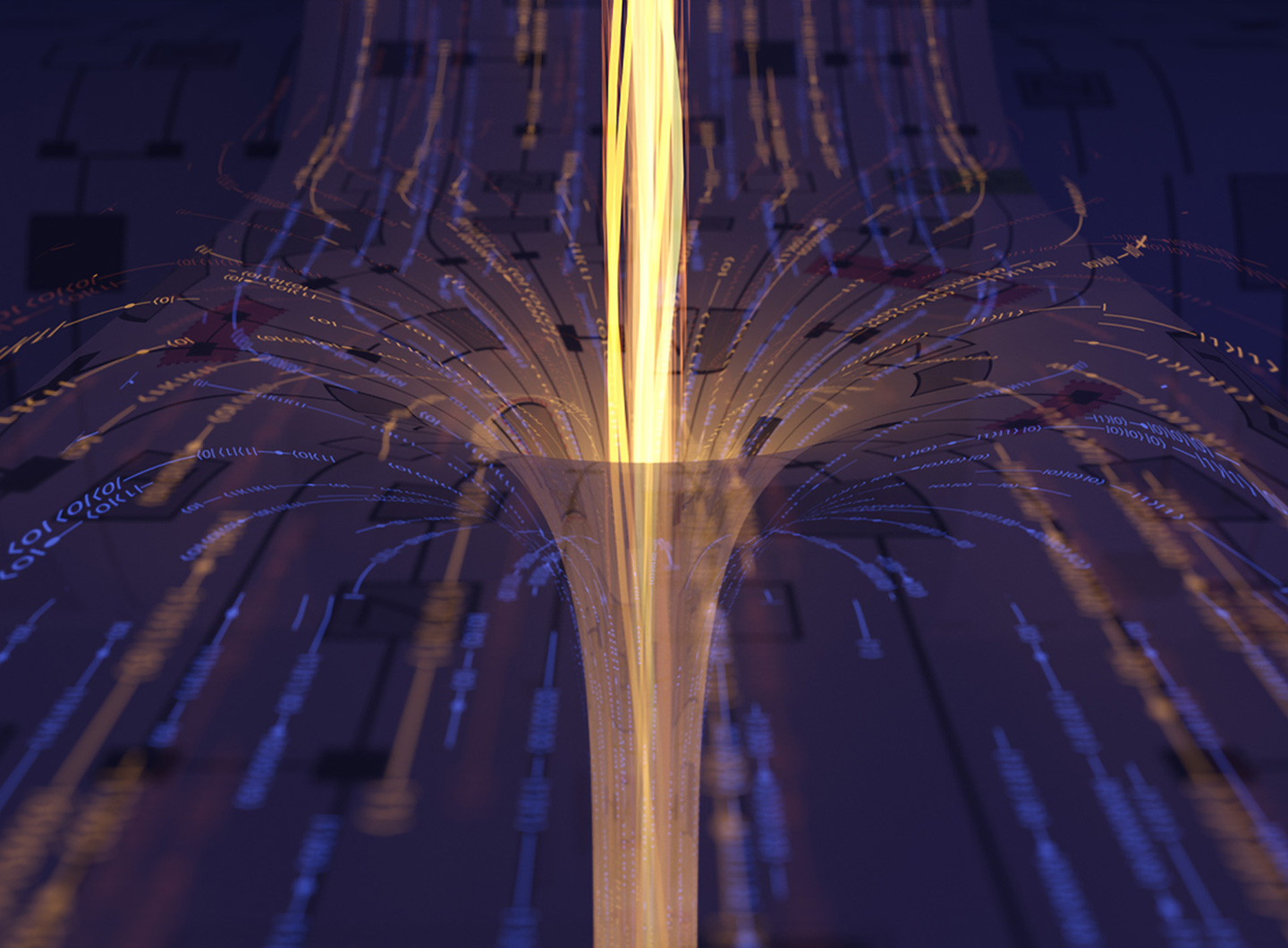

Physicists, mathematicians, astronomers, and even filmmakers have long been fascinated by the concept of a wormhole: an unpredictable and oftentimes volatile phenomenon that is believed to create tunnels (and shortcuts between two distant locations) across spacetime. Another theory holds that if you link up two black holes in the right way, you can create a wormhole.
Studying wormholes is like piecing together an incomplete puzzle without knowing what the final picture is supposed to look like. You can roughly deduce what’s supposed to go in the gaps based on the completed images around it, but you can’t know for sure. That’s because there has not yet been definitive proof that wormholes are in fact out there. However, some of the solutions to fundamental equations and theories in physics suggest that such an entity exists.
In order to understand the properties of this cosmic phantom based on what has been deduced so far, researchers from Caltech, Harvard, MIT, Fermilab, and Google created a small “wormhole” effect between two quantum systems sitting on the same processor. What’s more, the team was able to send a signal through it.
According to Quanta, this edges the Caltech-Google team ahead of an IBM-Quantinuum team that also sought to establish wormhole teleportation.
While what they created is unfortunately not a real crack through the fabric of spacetime, the system does mimic the known dynamics of wormholes. In terms of the properties that physicists usually consider, like positive or negative energy, gravity and particle behavior, the computer simulation effectively looks and works like a tiny wormhole. This model, the team said in a press conference, is a way to study the fundamental problems of the universe in a laboratory setting. A paper describing this system was published this week in the journal Nature.
“We found a quantum system that exhibits key properties of a gravitational wormhole yet is sufficiently small to implement on today’s quantum hardware,” Maria Spiropulu, a professor of physics at Caltech, said in a press release. “This work constitutes a step toward a larger program of testing quantum gravity physics using a quantum computer.”
[Related: Chicago now has a 124-mile quantum network. This is what it’s for.]
Quantum gravity is a set of theories that posits how the rules governing gravity (which describes how matter and energy behave) and quantum mechanics (which describes how atoms and particles behave) fit together. Researchers don’t have the exact equation to describe quantum gravity in our universe yet.
Although scientists have been mulling over the relationship between gravity and wormholes for around 100 years, it wasn’t until 2013 that entanglement (a quantum physics phenomenon), was thought to factor into the link. And in 2017, another group of scientists suggested that traversable wormholes worked kind of like quantum teleportation (in which information is transported across space using principles of entanglement).
In the latest experiment, run on just 9 qubits (the quantum equivalent of binary bits in classical computing) in Google’s Sycamore quantum processor, the team used machine learning to set up a simplified version of the wormhole system “that could be encoded in the current quantum architectures and that would preserve the gravitational properties,” Spiropulu explained. During the experiment, they showed that information (in the form of qubits), could be sent through one system and reappear on the other system in the right order—a behavior that is wormhole-like.
[Related: In photos: Journey to the center of a quantum computer]
So how do researchers go about setting up a little universe in a box with its own special rules and geometry in place? According to Google, a special type of correspondence (technically known as AdS/CFT) between different physical theories allowed the scientists to construct a hologram-like universe where they can “connect objects in space with specific ensembles of interacting qubits on the surface,” researchers wrote in a blog post. “This allows quantum processors to work directly with qubits while providing insights into spacetime physics. By carefully defining the parameters of the quantum computer to emulate a given model, we can look at black holes, or even go further and look at two black holes connected to each other — a configuration known as a wormhole.”
The researchers used machine learning to find the perfect quantum system that would preserve some key gravitational properties and maintain the energy dynamics that they wanted the model to portray. Plus, they had to simulate particles called fermions.
The team noted in the press conference that there is strong evidence that our universe operates by similar rules as the hologram universe observed on the quantum chip. The researchers wrote in the Google blog item: “Gravity is only one example of the unique ability of quantum computers to probe complex physical theories: quantum processors can provide insight into time crystals, quantum chaos, and chemistry.”
